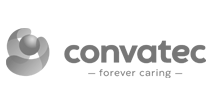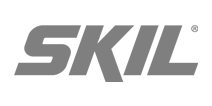
Spending For Growth
The start of 2024 has kicked off under the looming shadow of the one thing that brings no one an ounce of joy – recession. For most of us in the business world, it’s enough to make us lie awake at night, fretting about those lofty sales targets set by the board. Not least of which is the humble marketer, who often faces their budgets slashed in a fit of blind panic.
But is this sensible? The marketing department has long been seen as a cost centre. Often thought of as resource consumption, rather than resource generation. In a recession, it can be reduced to a mere limb that can be readily sacrificed to protect the vital organs of finance, operations, and other ‘primary’ business functions. This is particularly prevalent in small to medium-sized businesses, where investment requires more consideration.
Herein lies the problem.
It is true that if you continue to spend your marketing budget to generate sales, you’ll likely eat into profit margins. After all, the actual level of demand in the market for your brand and its products is diminished.
It is also true that taking your foot off the marketing pedal will weaken your market position. A 2021 study concluded that of 365 US brands that stopped advertising, market share on average dropped 10% after the first year, and up to 28%t in the third.
So, how can you win?
Whilst this can feel like a catch-22 predicament, it all comes down to how you spend your marketing pounds. The concepts of brand-building as opposed to sales generation have long been understood by marketers, since Field and Binet’s seminal piece The Long and the Short of it back in 2013. If you aren’t familiar with it and you control your business’s marketing budget – a slap on the wrists for you.
In essence, brands – as a rule of thumb – should be investing 60% of their budgets into brand-building activities and the remaining 40% into sales activation.
Here brand-building refers to the creative, emotive, and audio-visual types of advertising you’ll be familiar with – think John Lewis’ Christmas ads.
Sales activation, on the other hand, refers to advertising and marketing activities that focus on getting in-market buyers over the line to make a purchase – now we’re in the realms of sofa companies’ infamous never-ending sales ads.
Traditionally, your finance department loves the latter. Sales activation returns a quantifiable amount of business and revenue to your organisation, allowing the calculation of their beloved ROI. What isn’t accounted for is the slow-building, less-tangible brand equity that is built through your brand-building efforts.
A solitary focus on ROI focuses your marketing efforts on reaping short-term returns, over time this can erode your market share and dwindle your future sales pipeline.
Now a lot of marketers glaze over at this point. Sighs of resignation are accompanied by a statement along the lines of ‘We’re not Coca-Cola, we don’t have the budgets for massive TV campaigns’. No, you’re not Coca-Cola. In reality, you’re working with a mere fraction of that budget. At Door4, we don’t believe you have to have deep pockets or access to broadcast above-the-line media to execute effective brand-building campaigns. 
So, how do you grow your brand’s market share, become more memorable, and build your future sales pipeline – all without breaking the bank? Here are some pointers to set you off in the right direction:
1. Spend more than your share
Brand growth relies on your share of voice being consistently higher than your share of market. That is, your brand’s share of advertising spend in your category being higher than your brand’s share of the category’s total sales.
This information can be hard to find or calculate in some categories, but even some educated guessing will allow you to understand whether you can realistically expect growth. Remember, in a recession many of your competitors are pulling back on marketing spend, so it’s a great time to gain a larger share of voice.
2. Seriously invest in creativity
Putting your advertising budget into developing creative can feel like the last thing you should be doing in adversity. But the reality is that out-of-the-box thinking is far more effective than run-of-the-mill campaigns. So don’t be afraid to be bold with creative ideas and make campaigns that stand out.
Once you have an idea that sticks, stick with it. Flip-flopping between creative ideas is not only costly to maintain, it’s also generally ineffective when it comes to building your brand. So, think about squeezing as much value from your campaign platform as you can – for reference, those meerkats on TV have been selling you insurance comparison services now for over 15 years.
Bonus points are awarded if you can find a creative platform that triggers some level of emotion or feeling in your audience. It could be joy, humour, horror, pride, surprise – you name it, if it gets people feeling something, they’ll be far more likely to remember your brand.
3. Spread the word far and wide
In its essence, part of the marketer’s role is to try and attain some level of fame for their brand. Celebrities gain this fame through reaching masses of people, often through a variety of media. It’s no different for your brand. A majority of your marketing efforts should focus on reaching as many people as possible within your category.
Focusing on 25-45-year-old female homeowners with two cats and a penchant for knitting may seem a logical target audience for a yarn manufacturing business. This is dangerous logic. Your buyers or your business proposition are rarely so differentiated that they would warrant this sort of selective approach. The only result from this will be addressing a small number of category buyers, limiting your sales opportunity, and ultimately – losing market share.
Of course, apply some targeting logic. If you’re managing a dog food brand, you may be forgiven for avoiding individuals who don’t actually have a dog. But beyond these broad strokes, it’s better to reach as many people as possible in your category.
In addition to this, it’s important to consider that your buyers are consuming media across different channels at all times. The more of these channels you can afford to use effectively the better. Each additional channel adds beneficial multiplicity to your advertising effectiveness, as you reach more buyers more frequently in more placements.
If you’re managing a brand with ambitious growth targets and looking for your next big step, speak to the team at Door4 to unlock better results from both your sales activation and brand-building efforts.
Author: Jack Holden, Paid Media Specialist, Door4
-
 04.04.2023|We asked Door4 Head of Acquisition, Tom Morton, How do we measure the success of influencer marketing campaigns?
04.04.2023|We asked Door4 Head of Acquisition, Tom Morton, How do we measure the success of influencer marketing campaigns? -
 13.10.2023|Remarketing offers an all-important second (and third, fourth, fifth....) chance to connect with those visitors who have shown interest but haven't taken the desired action...
13.10.2023|Remarketing offers an all-important second (and third, fourth, fifth....) chance to connect with those visitors who have shown interest but haven't taken the desired action... -
 06.10.2023|Google is retiring several attribution models, including First Click, Linear, Time Decay, and Position-Based. But don't worry; this change brings exciting opportunities for better data analysis and decision-making.
06.10.2023|Google is retiring several attribution models, including First Click, Linear, Time Decay, and Position-Based. But don't worry; this change brings exciting opportunities for better data analysis and decision-making.
We have a lot to talk about.
ScrapbookDoor4 opinions and insight - our articles features and ramblings.
We explore performance marketing, AI, communications and optimisation.















